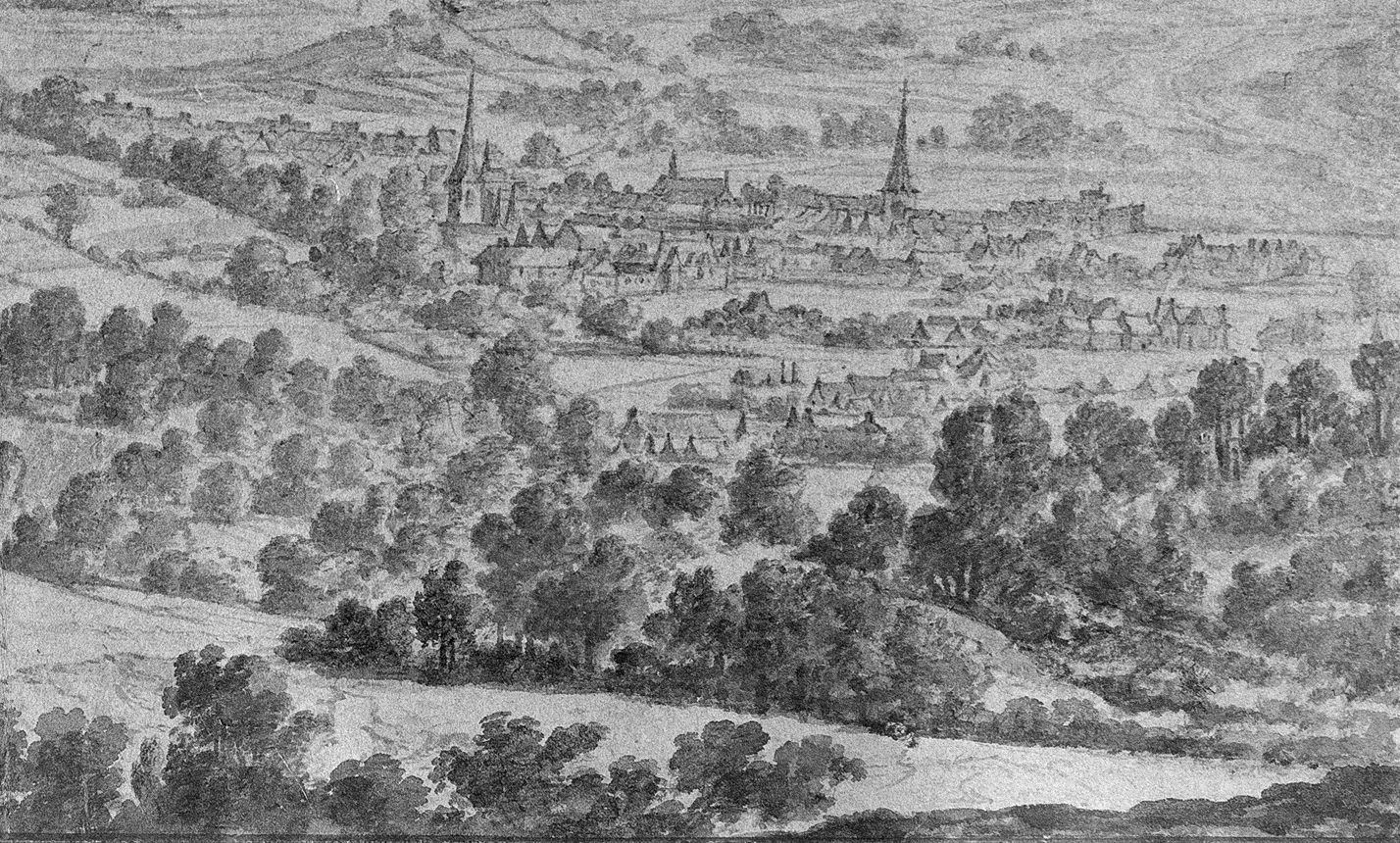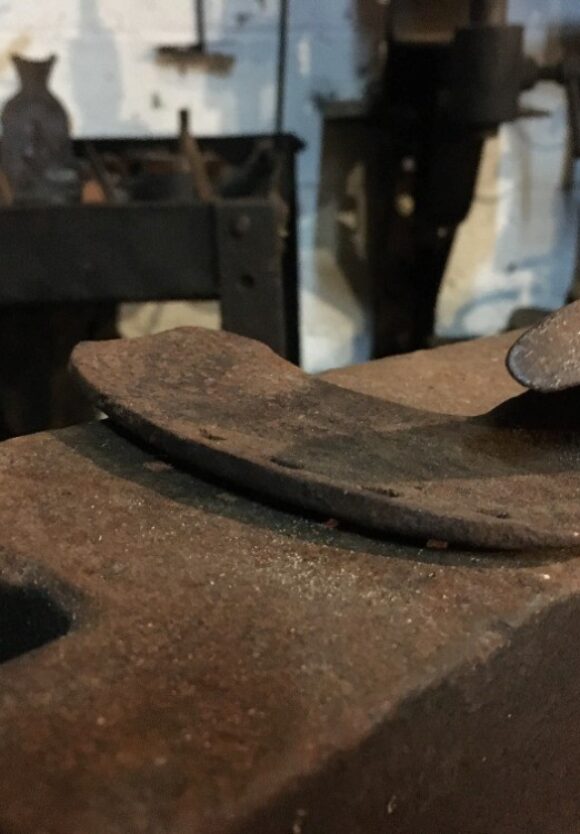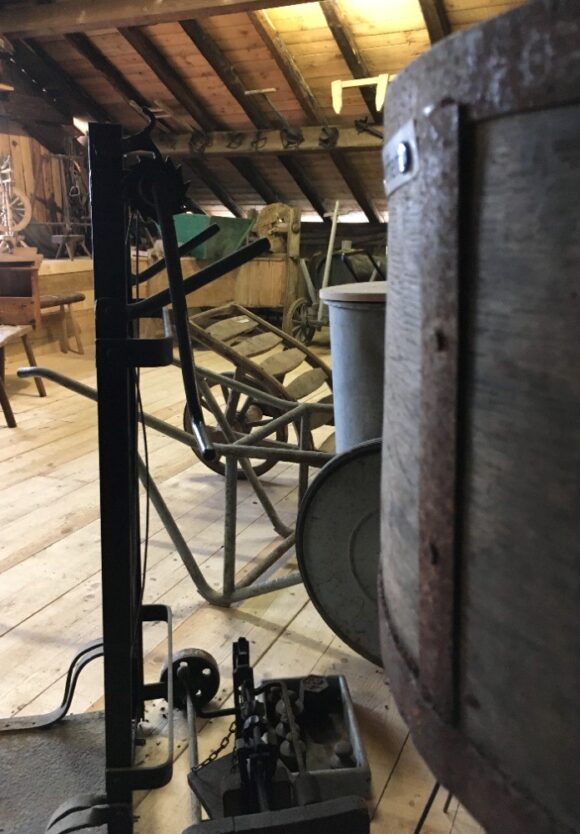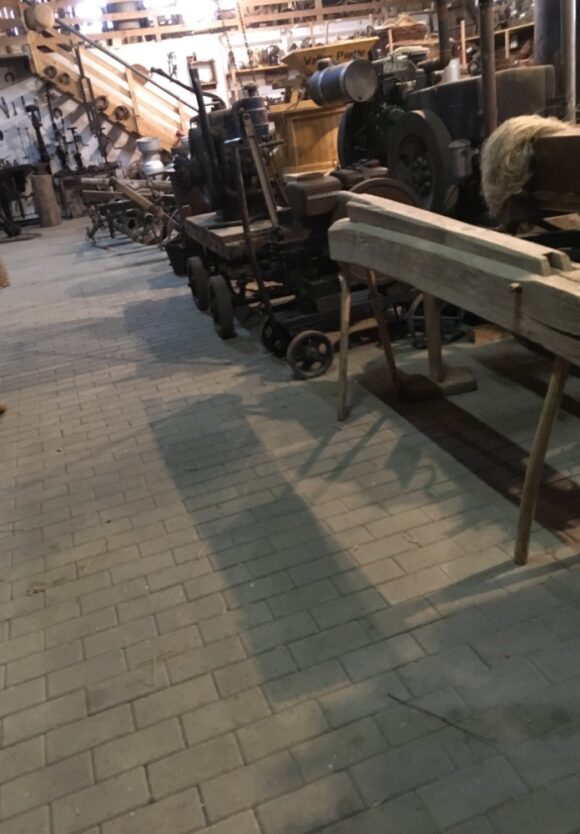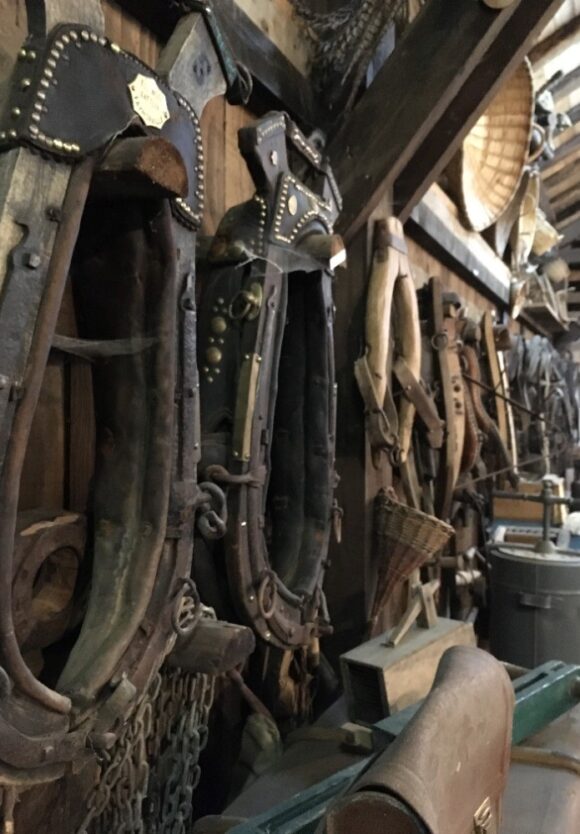The Museum
The foundation of the museum collection was laid over 50 years ago by Aloys Jost (1940-2022). After the collection of agricultural implements had grown to over 3000 items, Aloys Jost, together with his grandson Gary Jost, decided to convert an old barn into a museum in 2006. The collection grew even more after the museum was built and the museum had to move some treasures to a specially built depot.
In addition to the static objects, there are also animals in and around the museum. The farm run by the Jost family is concerned with the preservation of old breeds of domestic animals and, in addition to the East Belgian Rotbunte breed of cattle, also breeds an old breed of chicken called Rheinländer.
Rapid progress over the past 150 years
As soon as visitors enter the museum, they are made aware of the rapid pace at which agriculture has developed over the past 150 years. Even after industrialisation in the big cities had already taken off rapidly in the middle of the 19th century, time seemed to have stood still in the Eifel.
The barren landscape and the adverse climate made agricultural work extremely difficult. Above all, a cow and a few chickens provided the daily subsistence for a large part of the Eifel inhabitants. However, the often very small agricultural plots still required a lot of manual labour well into the 1950s as the soil was often so impassable that even the new machines, if and when they could be afforded, were only of limited use. The 1960s brought possibilities for mechanisation even for the relatively small farms in the Eifel, so that economic efficiency increased enormously.
The museum exhibits reflect this chronological range. From the simple sickle of the 18th century to the modern milking machine of the 1960s, there is much to see. The guided tour of the museum also focuses on this topic and places the individual objects in their historical context.
The ox shoe
Visitors to the museum are often amazed by this curious-looking piece of iron. But with the help of this object, it is possible to look back in time to when clawed animals (sheep, goats, oxen, cows) were still an integral part of farm labour. Often it was even the poor-looking cow that pulled the wagon during the day and had to give a few litres of milk in the morning/evening in addition, despite moderate feeding.
The people who could afford it let an ox pull the wagon; although it did not give any milk, its strength was much higher. Since oxen wore these irons more often to protect their claws, the name ox shoe came into use over time. It served to prevent the animals from getting their soft hooves sore on the sharp gravel stones.
Gary Jost
